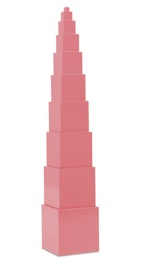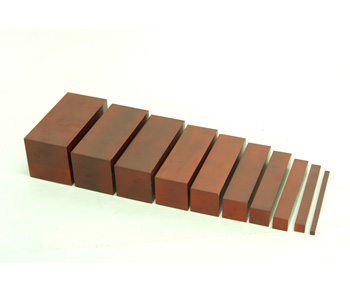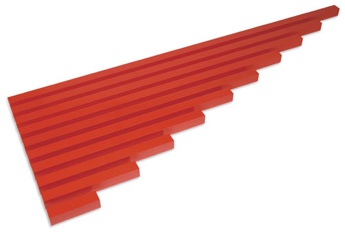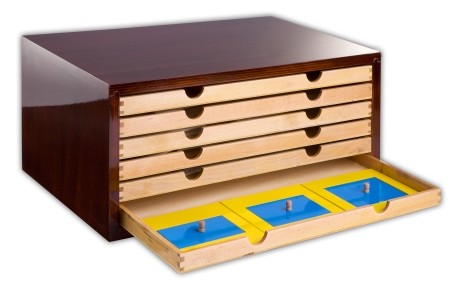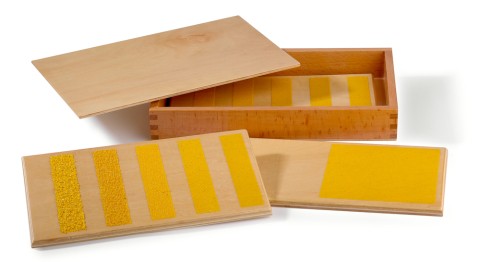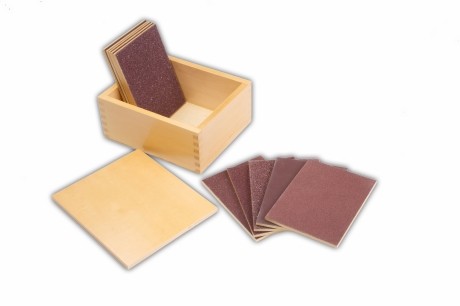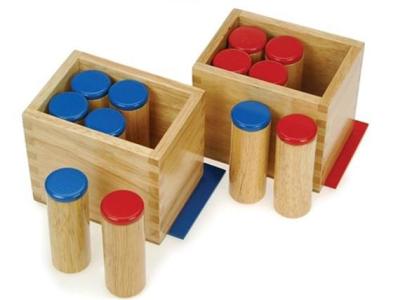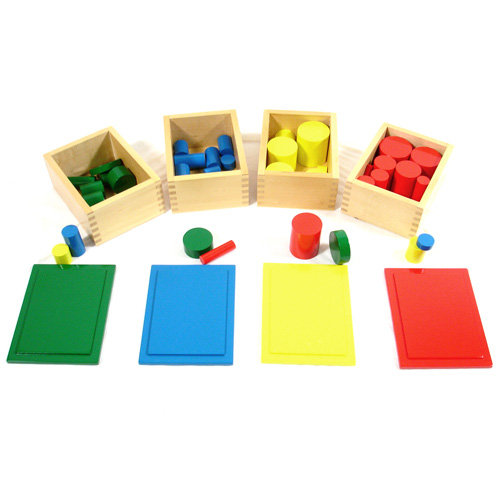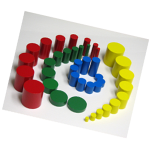
Maria Montessori believed that nothing comes into the mind except through the senses. During the years between three and six, as children develop their senses, their attention is directed toward the environment. The purpose of the Sensorial activities is to help the child in his efforts to sort out the many varied impressions given by the senses. These materials are specifically designed to help the child develop discrimination, order, and to broaden and refine the senses. These materials also help prepare him to be a logical, aware, and perceptive person.
Visual discrimination of difference in dimension, width, length, and size can be found in materials such as the Pink Tower, Brown Stair, Red Rods, and Knobbed Cylinders.
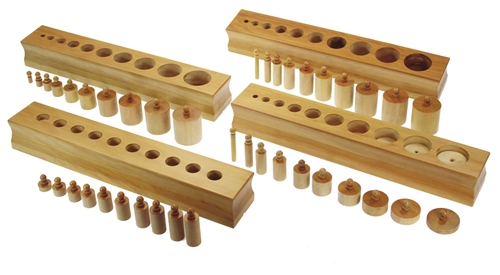
Other activities that enhance visual sense are the Colour Tablets, Geometric Cabinet, and the Constructive Triangles.
The Touch-Tablets, and Fabric-Feel isolate the tactile sense, while Sound Cylinders and Bells train the auditory sense. The Mystery Bag helps to develop the stereognostic sense (the tactile-muscular sense).
The Sensorial materials are designed with a built in feed back to control of error to show when mistakes have been made. The child then remains independent of your oversight and develops an inner, personal incentive to practice and improve. After experiencing Sensorial activities, the child’s sense perceptions will appear inherently structured and capable of comprehending abstract concepts.

